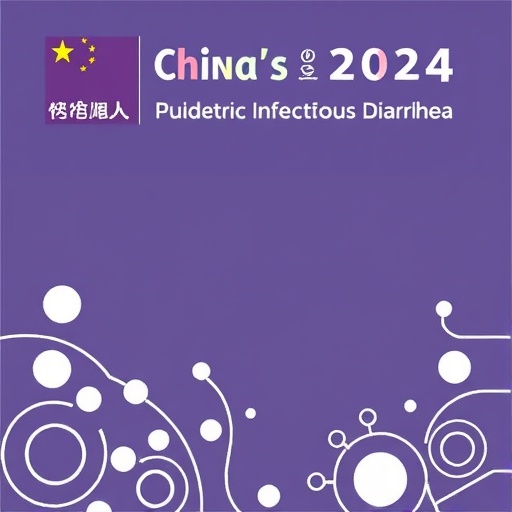In a groundbreaking development, the pediatric healthcare landscape in China is set to undergo a significant transformation with the release of the “Clinical Practice Guidelines for Acute Infectious Diarrhea in Children in China (2024).” Published in the July 2025 issue of World Journal of Pediatrics, these guidelines represent a comprehensive, evidence-based approach designed to streamline diagnosis, treatment, and management of one of the most prevalent childhood illnesses globally. Acute infectious diarrhea remains a leading cause of morbidity and mortality in children, particularly in low- and middle-income regions, making these guidelines critically impactful on both clinical outcomes and public health policies.
The newly published guidelines consolidate the vast array of emerging research and clinical experience accumulated over the past decade, targeting a condition that continues to burden pediatric populations. Acute infectious diarrhea, typically caused by viral, bacterial, or parasitic pathogens, poses diagnostic challenges due to overlapping clinical features and the rapidly evolving spectrum of infectious agents involved. Recognizing this complexity, the guidelines emphasize a multi-faceted diagnostic algorithm integrating advanced microbiological testing, patient history, and clinical presentation to optimize accuracy and timeliness of diagnosis.
A key innovation underpinning these guidelines is the incorporation of molecular diagnostic techniques. The authors advocate for the use of polymerase chain reaction (PCR) and next-generation sequencing (NGS) platforms as frontline diagnostic tools in tertiary care settings. These technologies offer unparalleled sensitivity and specificity, enabling identification of etiologic agents even in cases with low pathogen load. Such advancements mark a departure from traditional stool culture methods, which, despite their utility, suffer from longer turnaround times and lower sensitivity for viruses and fastidious bacteria.
Beyond diagnostics, the guidelines meticulously delineate therapeutic protocols tailored to the etiological agent and clinical severity. Emphasis is placed on judicious use of antimicrobials to combat bacterial infections, with explicit cautions against the indiscriminate use of antibiotics that contribute to antimicrobial resistance (AMR). The document further expands on rehydration strategies—the cornerstone of diarrhea management—comparing oral rehydration solutions (ORS) of varying osmolarities and compositions. The recommendations advocate for timely initiation of low-osmolarity ORS supplemented with zinc, heralding significant evidence of improved outcomes and reduced diarrhea duration in children.
Supporting care modalities are also expounded upon, with detailed guidance on nutritional management during acute episodes. The guidelines reaffirm the safety and importance of continued feeding, including breastfeeding, debunking outdated practices of fasting that can exacerbate malnutrition and delay recovery. Special attention is devoted to vulnerable populations such as neonates, immunocompromised children, and those with malnutrition, underscoring customized interventions and vigilant monitoring.
Remarkably, the document integrates public health considerations by outlining preventive strategies encompassing hygiene promotion, sanitation improvement, vaccination, and caregiver education. The role of rotavirus vaccination, for instance, is underscored as a powerful tool in reducing disease incidence and severity. Concomitantly, the guidelines highlight community-based surveillance systems to detect outbreaks early, enabling rapid response and containment.
From an epidemiological standpoint, the guidelines synthesize data on seasonal and geographic variations in pathogen profiles across China’s diverse regions, guiding clinicians towards regionally tailored empirical approaches. For example, incidences of bacterial enteropathogens such as Shigella and Salmonella vary widely, necessitating differential consideration in distinct provinces and urban versus rural settings. This granular approach enhances clinical precision and resource utilization efficiency.
The authors dedicate substantial discussion to the emerging threat of multidrug-resistant organisms (MDROs) in the context of diarrheal diseases. They propose integrated stewardship programs blending antibiotic policy, infection control, and pathogen surveillance, thereby positioning China at the forefront of battling AMR in pediatric infectious diarrhea. Notably, the guidelines caution healthcare providers to prioritize susceptibility testing before initiating antibiotic therapies, where feasible.
In research terms, the guidelines identify critical knowledge gaps and call for robust longitudinal studies, particularly focusing on the microbiome’s role in diarrhea pathogenesis and recovery. This evolving field offers promising avenues for novel therapeutic interventions, including probiotics and microbiota transplantation, which remain under active investigation. The document’s forward-looking stance encourages collaborative scientific efforts to translate emerging microbiological insights into clinical practice.
Technological integration also plays a role within the guidelines’ framework. The authors advocate harnessing telemedicine and digital health platforms to enhance disease monitoring, patient follow-up, and caregiver engagement—especially vital in remote or underserved regions. Such innovations not only improve access but also foster adherence to therapeutic regimens and preventative measures.
With a holistic scope, the guidelines further stress the importance of interdisciplinary teamwork among pediatricians, infectious disease specialists, nutritionists, and public health officials. By fostering communication channels and shared decision-making, the guidelines aim to elevate standard care and reduce variability in treatment outcomes. Training and capacity-building initiatives are identified as essential to implement these guidelines effectively at all healthcare levels.
Moreover, these clinical practice guidelines arrive at a critical juncture amid ongoing global challenges such as climate change and evolving pathogen dynamics, which influence diarrheal disease patterns. In this context, the document serves as a dynamic blueprint adaptable to shifting epidemiological landscapes, safeguarding children’s health against emerging infectious threats.
In conclusion, the “Clinical Practice Guidelines for Acute Infectious Diarrhea in Children in China (2024)” encapsulate a rigorous synthesis of contemporary evidence and expert consensus. They represent a seminal resource that equips healthcare providers with precision tools and strategies to tackle a pervasive pediatric health issue. By uniting clinical acumen, technological innovation, and public health foresight, these guidelines herald a new era in the management of infectious diarrhea, promising substantial reductions in child morbidity and mortality across China and offering a model that may well inspire global pediatric care standards.
Article References:
Fang, YH., Wan, CM., Gong, ST. et al. Clinical practice guidelines for acute infectious diarrhea in children in China (2024). World J Pediatr 21, 708–719 (2025). https://doi.org/10.1007/s12519-025-00894-7
Image Credits: AI Generated
DOI: July 2025




